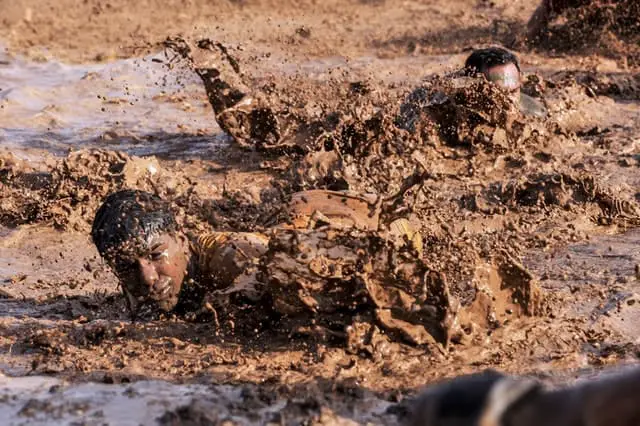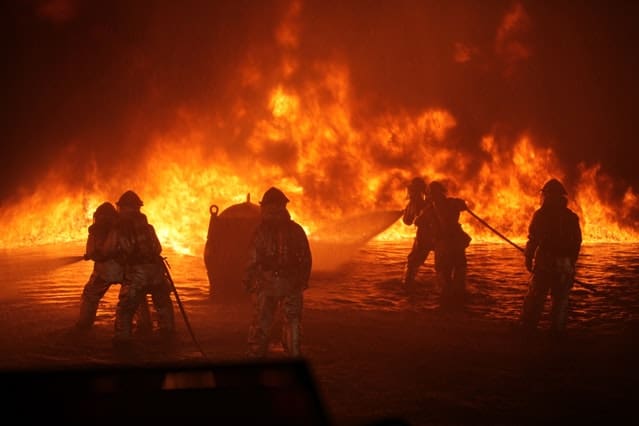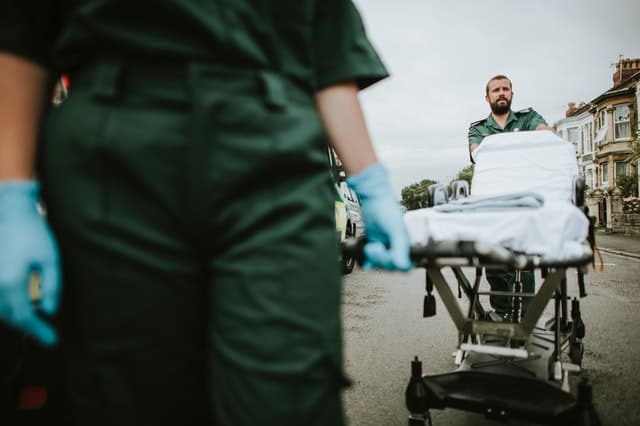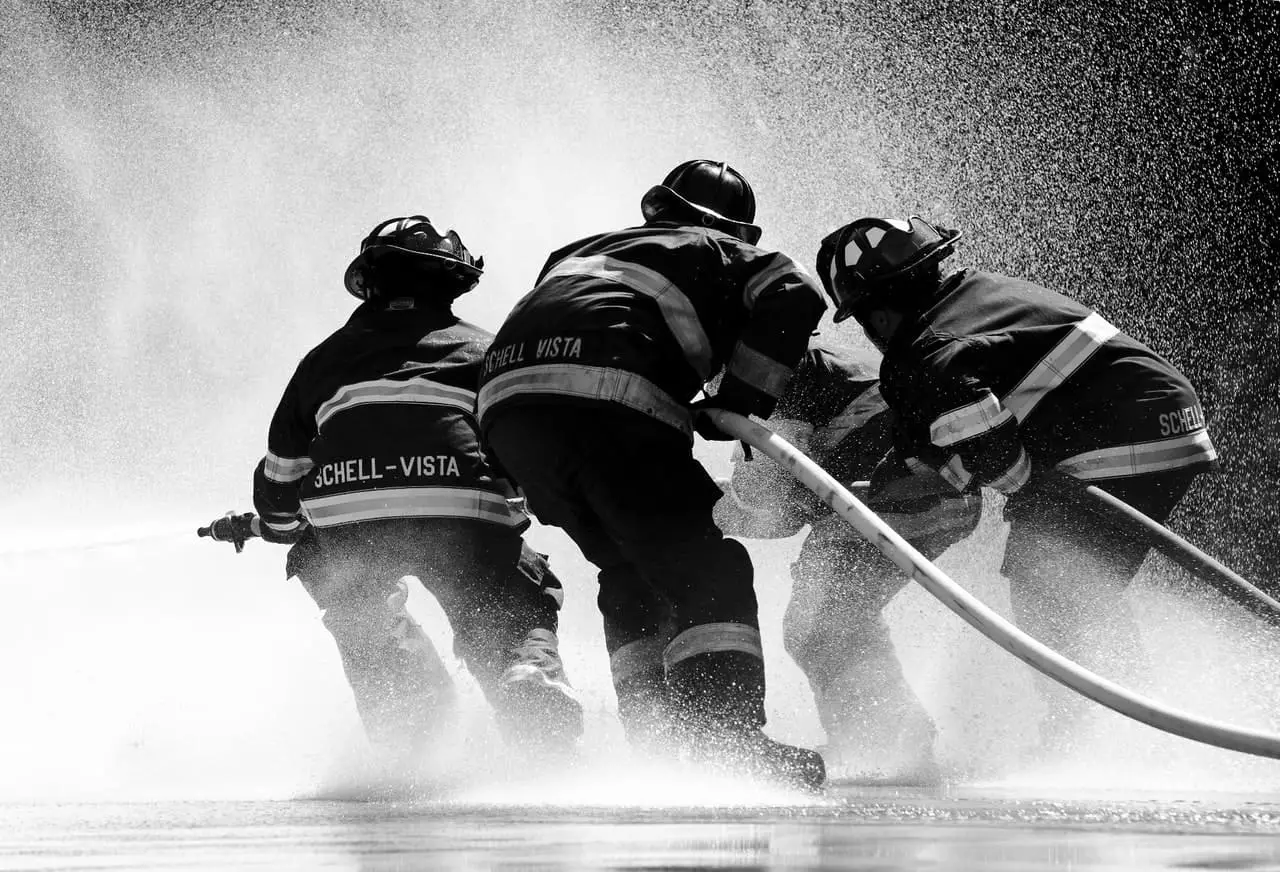Stress occurs in every occupation there is. There are many careers that cause far more stress than others. By acknowledging those jobs that come with a high-stress level, we can determine the aspects of the position that causes stress. With that knowledge, we can understand how to lessen the burden.
What are some of the high-stress occupations in the United States? Military personnel, first responders, and airline pilots are among the top most stressful careers.
Recent numbers indicate that 78% of employees in the workforce feel excessively stressed in the workplace. Defining the stress-causing factors is one of the most important parts of treating it. It can also be important to know the effects of those particular forms of stress cause. Advocating for mental health starts with preventative measures for illness.
11 Top Stress-Inducing Occupation Factors
According to studies, the top three stressful jobs are military personnel, first responders, and airline pilots. This was determined based on 11 different aspects of work. Those aspects include the following:
-
1. The risk to life or body
-
2. Danger to another’s life
-
3. Physical hazards
-
4. Environmental and weather conditions
-
5. Manual labor
-
6. Travel
-
7. Level of competition
-
8. Opportunity for advancement
-
9. Being under the public eye
-
10. Communicating with the public
-
11. Deadlines
Although every job has its own stresses, it was determined that these 11 factors would calculate how much stress each job had in relation to others. (We have also written an article highlighting 50 Workplace Stress Statistics )
)
A career that regularly risks your life or personal safety is one that would cause a lot of stress. Imagine a job where you are not 100% sure if you will make it home in the same condition in which you left it. That would be a job where you would not only worry about your own life on a day to day basis, but you would also stress about the effect that loss would have on your family and friends.
Although similar, danger to another’s life is also entirely different on the stress scale. Imagine being responsible for saving the life of a coworker or complete stranger. Or, even before the life-saving part occurs, being solely accountable for ensuring that person’s safety. The stress that a load like that would put on one’s shoulder would be immense.
Stress that stems from physical hazards is the burden placed on an employee that works with machinery, chemicals, or any number of dangerous materials. There are a variety of things that can go wrong when working with hazards. It is the threat of those wrongs that causes a career involving hazards far more stressful.
A position that requires the employee to work in extreme conditions – or even difficult conditions – is one that puts stress on said employee. When a person is expected to work in extreme heat, not only are they susceptible to literal heat stress, but he or she is likely miserable. The opposite end of the spectrum is also true. That misery only adds to the stress.
Manual labor puts a lot of stress on the body. While it can be a good way to rid the mind of anxiety, the added pressures of manual labor make it harder for employees on a day to day basis. It also becomes a mental burden when a worker begins to age and wonders if he or she can continue such tasks until retirement.
Frequent travel for work can put a strain on relationships, families, and the employee themselves. The challenge of living out of a hotel room and flying frequently whilst still keeping in touch with loved ones is often a task that weighs on the employee’s shoulders.
Another burden for employees is the level of competition in the workplace. If an individual is constantly going against coworkers is an attempt to get a better assignment, position, or even praise, the stress can begin to build. While a certain level of competition is good for the work environment, too much can cause problems.
The opportunity for advancement is another one of those stress-inducing factors. It can go hand in hand with competition in that less opportunity to move up the corporate ladder means that a high number of coworkers are likely going for the same job. It can also be hard to feel stuck in a job with no future or possible improvement.
Being in the eye of the public is a large burden to carry. Everyone has an opinion, whether it is an educated one or not. A career that is publicized regularly and commented on just as often is one that causes a lot of anxiety and struggle.
Perhaps more stressful than just being in the public eye is speaking with the public. This could mean press conferences or public speaking or simply communicating regularly with people that do not work with you. Those people might be patients, passengers, customers, and more.
One of the most common stressors in the workplace is deadlines. Many occupations have due dates for assignments. Ensuring the completion of those assignments by the deadline can be anxiety-inducing. Missing a deadline even more so. It tends to make employees feel rushed, which serves to add on to the stress.
By breaking down the above factors, a way of analyzing each career has been developed. Understanding these factors leads to further understanding of the stress by occupation in general. Each job has its own level of anxiety as a result of these factors. The work that involves the most is the one that tops the list: military.
Military Stresses

Knowing those factors, it seems obvious as to why those three careers make the top of the list. A person in the military faces life-threatening situations and coworkers and others around them are often in danger as well. They can encounter any number of hazards and conditions regularly, are expected to do a variety of physically daunting tasks, and are often on the other side of the world from their homes.
There are an estimated 2 million members of the military and reserves, meaning competition for the desired position is high. The opportunity for advancement is there, but rare to reach high ranks. These men and women are always in the public eye and frequently have to interact with civilians. Lastly, there are tasks that need to be completed by specific times.
Go through a day in the life of a deployed military officer. He or she can wake up to gunfire or explosions at any moment. The concern for their own lives at this point and throughout the day should be obvious. This is likely a major cause of anxiety.
The officer might witness a brother in arms get seriously injured. That same officer could be responsible for getting the injured party to safety. Thus, once again risking his or her own life whilst attempting to save the life of another.
I think it’s safe to say hazards abound in a warzone. From grenades and ammunition to chemicals and various dangers, military personnel can surely find hazards on a daily basis, even if those hazards weren’t being searched for.
The danger of extreme conditions is just another stressor that the military has to deal.with when deployed. Whether the deployment is in the desert or in the Arctic, members of the military are often exposed to unwelcomed temperatures.
Manual labor is often a guaranteed aspect of military life. From carrying gear to keeping up the appearance of a Naval ship, there is a wide variety of manual labor expected of soldiers, sailors, airmen, and Marines. Many of these men and women do just as much manual labor Stateside as they do overseas.

You could say that military people travel a lot. Many of the enlisted members of the military do not see it as travel, however. Even so, being in another country for several months is considered extended travel in this study. This means that the stress that comes from being so far from home for so long just adds to the reason that it is the most stressful career out there.
From an outside view, the level of competition with the military is not an issue. Because of the life or death situations that these people live daily, it seems as though the trust and camaraderie would trump any competition. However, with the high number of enlisted personnel and fewer jobs available in climbing the ladder, competition can become an issue.
That brings us to opportunity for advancement. While there is an opportunity, many of the enlisted are in 4 or 8-year contracts. The individuals often have the option to extend their stay in military life, but that adds another stressor to the mix.
It is also stressful for military personnel, as they are constantly in the public eye. While it may come as a comfort that they are usually in the public eye as a whole entity, rather than a single person, many still feel the judgment and opinions placed on them just the same.
Every person serving (or that has served) receives thanks from complete strangers. This interaction is harmless to some, yet a struggle for others. The thanks are appreciated in most cases, but a cause of stress to be reminded of the things they have seen and what they are truly being thanked for.
Even the smallest of tasks are done on a deadline in the military. From making your bed to delivering confidential documents, members of the military are on a timer. Those deadlines are sometimes even more of a stressor when they mean life or death.
It is the collection of these factors that makes the military the number one most stressful career. Despite those stresses associated with the job, millions are currently serving and millions have served in the past. Knowing a small fraction of the truth of their jobs will likely cause a feeling of intense thanks for the sacrifices made by these brave men and women in uniform.
First Responders

A first responder is police, firefighter, or EMS personnel. The experiences that these people have on a daily basis cause a number of mental health concerns. In fact, a first responder is 20% more likely to attempt suicide than a person not in this field. You might imagine the level of work-related stress one has encountered in order to reach that point.
While not all first responders are regularly at risk (EMS), even they, at times, are in life-threatening situations. In fact, many ambulances keep kevlar vests on hand just in case. Police and firefighters are the two first responders that do risk their lives regularly. From fires to robberies, these first responders accept the risk that comes with the job.
The risk of experiencing someone else in danger is an even higher threat. Since first responders are responsible for assisting with car wrecks, house fires, suicidal attempts, shootouts, and more, the likelihood of being involved in the rescuing or live saving aspect of these events is huge. In fact, it is probable that a first responder would see this every day – if not multiple times per day.
The physical hazards that a first responder might run into on a daily basis are extensive. From chemical spills to gas fires, there are a number of hazards lurking in the public. Being that first responders serve the public, it is assumed that all dangers in the town or city in which they work apply to them as well as the citizens.
Environmental and weather conditions are just as extensive, as these individuals are unable to close up shop when the weather gets tough. If there is a blizzard, 9-1-1 is still operational and these people have to work. When there is a public danger that causes all people to remain indoors, first responders still have to go on emergency calls.
Manual labor among first responders could be carrying an injured person down two flights of stairs or lugging bunker gear around the scene of a fire. The amount of manual labor seen on a day to day basis depends on the area and the events that are occurring in the city.
While travel is not a large issue among first responders, there are numerous occasions when an EMS provider must drive a patient several hours to a different hospital. It can result in a longer than planned workday. However, since most first responders work a minimum of 12 hours at a time, the employee probably has the time to drive there and back prior to the end of their scheduled hours.

The level of competition among first responders is often based on the station at which they work. While some have a lot of competition, others have very little. There are also two ways of looking at competition in first responders. Amongst coworkers, the competition is not usually an issue. Between police, fire, and EMS, there is a sense of competition. While the three work together often, there is a bit of a friendly rivalry regarding which group is on scene first and other similar events.
The opportunity for advancement is there among all fields: police, fire, and EMS. For example, an EMS provider might start as an EMT-Basic. If he or she were to go to school to be a paramedic and pass the medic exam, a promotion would be in order. From there, a paramedic can become a supervisor. There is a ladder to climb amongst first responders just like many other careers.
More so today than ever before, first responders are under the public eye. Many departments are requiring police officers to wear body cameras so that every detail of a scene can be documented. With all of the police shootings in the media, there is a need to verify the necessity of discharging the weapon. This is for the protection of the officer as much as the victim.
The need to interact with the public is a massive aspect of being a first responder. It is the public that those individuals are meant to assist in their time of need. These jobs are designed to keep the people of the public safe and protected.
Reaching deadlines are also a part of the career as a first responder. For example, they track the response times from the time the station is toned out to the time they are en route. EMS, in particular, aims for that time to be less than 2 minutes. It is likely that other first responders have the same expectations.
With the weight of the lives of others upon their shoulders, it is believable that first responders have the second most stressful career in the United States. By working to strictly follow the expectations as previously listed, these individuals may find themselves extremely stressed. If those expectations are slacked on, it is likely that someone could lose their life. This ultimately adds even more stress to the occupation.
Airline Pilot

There are some aspects to being an airline pilot that seems as though it may cause some stress, but hitting enough of the 11 aspects to be in the top three is harder to understand. That conclusion is simply based on the outsider knowledge that we have of pilots. We simply see an individual flying a plane from destination to destination – a dream job for many, as seeing the world is a common item on a person’s bucket list. However, there is so much more behind the scenes that we often fail to see.
While the risk to a pilot’s life is not as immediate as that of a member of the military or a first responder, it is sometimes considered a risk to fly. There are times when the plane fails, weather causes trouble, passengers are dangerous. Because of these aspects of piloting, a risk to his or her life checks off this factor for stress.
Experiencing the risk of the lives of others is the same probability of the pilot being in danger. However, knowing that you are responsible for safely transporting a group of people from one place to another via plane can be a heavy weight to carry. If anything goes wrong in the air, fault can be immediately placed on to the pilot.
Hazards on a plane are fairly limited, especially something that can affect the pilot. This factor does not seem to have an impact on the level of stress that an airline pilot experiences.
Conditions are a big aspect of piloting a flight. From fog to rain to heavy thunderstorms, the conditions in which a pilot has to fly a plane can truly affect the level of stress he or she feels. It can also alter flight plans, as storms often delay or cancel planned flights. Not knowing exactly what or when these changes can be made adds another level to the anxiety the pilot is likely already feeling.
Other than bringing his or her own luggage to the airport, there is not a lot of manual labor expected when it comes to being a pilot. Because of this, it is not considered to be impactful on the 11 factors.
Perhaps the biggest stressor of being an airline pilot is the amount of travel involved. If traveling isn’t for you, then being a pilot isn’t either. However, even those that love to travel can get stressed out by the sheer amount that a pilot is expected to be away from home. Not only is a pilot continuously away from his or her friends and family, but many pilots have to commute to the airport before they fly out. This means flying from their home city to another airport as a passenger and then piloting a flight from that airport to another. It can be an exhausting cycle.

The level of competition among airline pilots is big, as growth in the career over the coming years is only expected in increase by a small amount. Anyone looking to get into piloting for an airline is looking at a small window of getting a job in the first place, meaning that many people in flight school will be competing with one another for a position.
Opportunities for advancement are available in this line of work, but it requires further education and a lot of experience. In most situations, the pilot with the most seniority gets the promotion over all others.
Typically airline pilots are only under the public eye when something goes wrong. Since a pilot is expected to check the plane prior to take off and monitor the systems for any potential issues throughout the flight, the media tends to put a lot of pressure on said pilot when something newsworthy occurs.
Communicating with the public can be a frequent expectation, as the pilot is responsible for informing passengers of flight information during the actual flight. While some greet passengers as they depart from the plane, most today do not stand with the flight attendants as they do this. This means that communicating with the public is most commonly left to speaking over the plane’s intercom.
Deadlines are a big part of piloting for an airline. Flights are scheduled for a reason and keeping that schedule is important to keep things running smoothly. A missed deadline will not only mess up that single flight, but it will mess up the flights after it. In order to get the plane where it needs to go so that it can refuel and do what needs to be done prior to the next flight, it is imperative that the pilot sticks to the schedule.
When each of the factors is added up, it is clarified why an airline pilot is considered the third most stressful job in the United States. You’d be hard pressed to find a career that is more stressful than these three in the world. Although stress might be subjective, these three jobs are the most commonly stressed upon in the workplace.
Workplace Stress and Health

Evaluating careers and their stress levels have been studied in a manner that turns what was once an opinion into a more scientific approach. While many people might feel that their own job is more stressful than those listed above, it is likely that he or she simply feels more stress in general. With such stressful workplaces, it is important to find a way to release the burden in a healthy manner.
Good ways of releasing stress from the body include getting some quality sleep, picking up a sport, listening to music, or sitting in the sunlight during your lunch break. By learning what works for you, you are more likely to decrease your stress levels in a noticeable way. Just because listening to white noise works for a coworker does not mean it will work for you. Everyone is different and everyone’s method for relief should be unique to them. (We wrote a detailed article on the top products that help reduce stress )
)
If you decide to go for one of the three most stressful career choices, military, first responder, or an airline pilot, be sure to work on your stress relief tactics beforehand. On the other hand, if you are already in these jobs, it can be important to brush up on your knowledge of stress. Understanding what kinds of health problems it can cause and how best to deal with stress is a good idea for someone exposed to highly stressful elements.
Since one of the biggest causes of concern when it comes to stress is mental illness, it is important to seek help if it seems as though the stress at work is becoming too much for you. Our occupations are meant to be our livelihood, but should not alter our lives so negatively that it makes a horrible impact on our health.
Related Questions
What are the most effective ways of relieving stress? Some of the most successful methods for lessening stress include meditation, breathing exercises, a power nap, or exercise. These ways have been proven to decrease stress quickly and efficiently. (We have also written an article How to Handle a Stressful Work Experience )
)
What is the least stressful career choice? Studies show that among 200 careers, the least stressful is that of a Medical Laboratory Technician. Next in line is an Operations Research Analyst.

